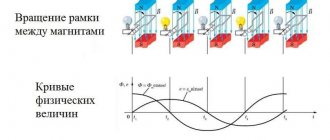Currently, humanity uses all possible ways to generate electricity. It is difficult to overestimate the importance of this resource. Moreover, its consumption is growing every day. For this reason, more and more attention is being paid to non-traditional methods of generating electricity. At the same time, these sources at this stage of development cannot fully satisfy the needs of the earth's population. This article briefly examines the main traditional and alternative methods of generating electricity.
Producing electricity at thermal power plants
This method of generating electricity is the most common. For example, in the Russian Federation, thermal sources account for almost 80% of the total production of the necessary resource. Years go by, environmentalists are practically shouting about the negative impact of such engineering structures on the environment and human health, but stations built in the middle of the last century (or even pre-revolutionary ones) continue to supply populated cities and large industrial enterprises with electricity.
Thermal sources are traditional methods of generating electricity. And for the past three or four decades they have been occupying a leading position in the ranking in terms of production volumes. This is despite the rapid development of alternative methods of generating electricity.
Among all engineering projects, a special type of structure is distinguished. These are combined heat and power plants, the additional function of which is to supply houses and apartments with heat. According to experts, the efficiency of such power plants is extremely low, and the transfer of the generated resource over long distances is associated with large losses.
Energy generation is carried out as follows. Solid, liquid or gaseous fuel is burned, heating the water in the boiler to significant temperatures. The power of the steam rotates the turbine blades, causing the turbine generator rotor to rotate and generating electricity.
Hydroelectric power plants are a promising way to generate electricity
The construction of complex engineering structures designed to convert water energy into electricity began in the Russian Empire. Many years have passed since then, but this source is still actively used. During the years of industrialization of the USSR (1930s), giant hydroelectric power stations grew throughout the country. All the forces of a young and fragile country were thrown into the construction of these giants (the Zaporozhye hydroelectric power station alone is worth it!). Engineering structures of those years are still in use and generate significant amounts of electricity.
Currently, the state is relying on the development of “green” methods of generating electricity. Therefore, the construction of modern and very productive hydroelectric power plants throughout the country is being actively financed. The strategy of constructing small-scale facilities on small tributaries of rivers has fully justified itself. One such station can fully satisfy the electricity needs of small adjacent settlements. Nationwide, this will lead to increased efficiency of the national economy and the competitiveness of domestic manufacturers of industrial goods.
The disadvantages of this technology include the high cost of such objects and very long payback periods. The main costs are for the construction of the dam. But it is necessary to erect the building itself (administrative and engine buildings), build a device for discharging water, and so on. The parameters and composition of the structure depend on many factors: the installed power of the generators and water pressure, the type of power plant (dam, run-of-the-river, diversion, storage, tidal). Hydroelectric power plants on large navigable rivers also have complex navigation locks and canals to facilitate the migration of fish to spawning grounds.
Tidal power plants.
The water level changes 4 times during the day, such fluctuations are especially noticeable in the bays and mouths of rivers flowing into the sea. To set up a simple tidal power plant (TPP), you need a pool - a dammed bay or a river mouth. The dam has culverts and installed turbines. Double-acting PES (turbines operate when water moves from the sea to the pool and back) are capable of generating electricity continuously for 4-5 hours with breaks of 1-2 hours four times a day.
The first tidal power plant with a capacity of 240 MW was launched in 1966 in France at the mouth of the Rance River, which flows into the English Channel, where the average amplitude of tides is 8.4 m. Despite the high cost of construction, which is almost 2.5 times higher than the costs for the construction of a hydroelectric power station of the same capacity, the first experience of operating a tidal power station turned out to be economically justified. The power plant on the Rance River is part of the French energy system and is being used efficiently. In 1968, a pilot industrial power plant with a design capacity of 800 kW came into operation on the Barents Sea. The place of its construction - Kislaya Bay - is a narrow bay 150 m wide and 450 m long. There are projects of large tidal power plants with a capacity of 320 MW (Kola) and 4000 MW (Mezenskaya) on the White Sea, where the tidal amplitude is 7-10 m. It is also planned to use the enormous energy potential of the Sea of Okhotsk, where in some places, for example in Penzhinskaya Bay, the tidal height reaches 12.9 m, and in Gizhiginskaya Bay - 12-14 m. In 1985, a tidal power plant was put into operation in the Bay of Fundy in Canada with a capacity of 20 MW (amplitude The tide here is 19.6 m). Three small tidal power plants have been built in China. In the UK, a 1000 MW tidal power plant project is being developed in the Severn Estuary, where the average tidal range is 16.3 m.
From an environmental point of view, PES have an undeniable advantage over thermal power plants that burn oil and coal. Favorable preconditions for the wider use of tidal energy are associated with the possibility of using the recently created Gorlov helicoidal turbine, which allows the construction of tidal power plants without dams, reducing the cost of their construction. The first damless TPPs are planned to be built in the coming years in South Korea.
Nuclear power
Today, a nuclear power plant will no longer surprise anyone. Such facilities began to be actively built back in the USSR. Therefore, this technology belongs to traditional methods of generating electricity.
Nuclear power plants are currently being actively built not only in Russia, but also in countries near and far abroad. For example, a company with Russian roots, Rosatom, finances the construction of such a source in the Republic of Belarus. By the way, this station will be the first in this territory.
The world's attitude towards nuclear energy is very ambiguous. Germany, for example, has seriously decided to completely abandon the peaceful atom. And this is at a time when the Russian Federation is actively investing in the construction of new facilities of the latest generation.
Scientists have reliably established that nuclear fuel deposits in the bowels of the earth are much larger than all hydrocarbon reserves (oil and gas). The constantly growing demand for hydrocarbons leads to their rise in price. This is precisely why the development of nuclear energy justifies itself.
Introduction.
Among the greatest achievements of the twentieth century, along with genetic and semiconductor technologies, the discovery and mastery of atomic energy occupies a special place.
Humanity has gained access to a huge and potentially dangerous source of energy, which can neither be closed nor forgotten; it must be used not to harm, but to the benefit of humanity.
Nuclear energy has two “generic” functions - military, destructive and energetic - creative. As the terrifying nuclear arsenals created during the Cold War are destroyed, atomic energy will penetrate into civilized society in the form of heat, electricity, medical isotopes, nuclear technology, which has applications in industry, space, agriculture, archeology, forensics, etc. .
In the 21st century, energy resource depletion will no longer be the first limiting factor. The main factor is limiting the ecological capacity of the habitat.
The progress made in making nuclear energy a safe, clean and efficient means of meeting growing global energy needs cannot be achieved by any other technology, despite the appeal of wind, solar and other "renewable" energy sources.
However, the current understanding of nuclear energy in society is still shrouded in myths and fears, which absolutely do not correspond to the actual state of affairs, and are mainly based solely on feelings and emotions.
In the case when voting is proposed to resolve issues of danger where the laws of nature apply (in the terminology of V.I. Vernadsky, when “public opinion” is ahead of “public understanding”), paradoxically, the environmental danger is downplayed.
Therefore, one of the most important tasks currently facing scientists is the task of achieving “public understanding” of environmental problems, including nuclear energy.
The activity of environmental movements should be welcomed, but it should be constructive and not destructive.
A well-organized and civilized dialogue between specialists and the public is certainly useful.
The goal of our project is to analyze the information necessary to develop our own informed attitude to the problems of energy development in general and nuclear energy in particular.
Wind energy
Wind power on an industrial scale has emerged relatively recently and has added to the list of unconventional methods of generating electricity. And this is a very promising technology. With a high degree of probability, it can be said that in the distant future, wind turbines will generate as much electricity as humanity needs. And these are not empty words, because according to the most conservative estimates of scientists, the total force of the wind on the surface of the globe is at least a hundred times greater than the power of all water resources.
The main problem is the variability of air flows, which entails difficulties in predicting energy production. Over the vast territory of Russia, winds constantly blow. And if you learn to use this inexhaustible resource efficiently and effectively, then you can more than satisfy all the needs of heavy industry and the country's population.
Despite the obvious advantages of using wind energy, the volume of electricity generated by wind power plants does not exceed one percent of the total. Equipment for these purposes is very expensive; in addition, such facilities will not be effective in every area, and transporting electricity over long distances is associated with large losses.
Unusual sources of alternative energy
Modern technologies for producing alternative energy are developing very quickly. New systems, equipment and methods for obtaining or creating energy sources are appearing. Here are just some of the sources that are already being used.
- Solar panels in the form of a window. Panels that recycle solar energy are now the most popular method of producing alternative energy. Initially, such systems could only be installed on the roof or on special sites. However, now a new generation of panels has appeared that can be placed in the window opening. Such batteries are highly transparent. Therefore, they are attached directly to the glass. This is a reliable way to obtain additional energy for an office or private home.
- Windmill on a trailer. Recently, Uprise, a well-known wind system manufacturer, has developed a new type of turbine. This device is highly efficient and at the same time has compact dimensions (like for a windmill). The new turbine is installed in the car trailer. This makes the system mobile. It can be easily transported and installed in areas where there are electrical problems. Nowadays, such equipment is often purchased by mobile home owners.
- Energy with a kite. This is another development that allows a person to receive heat and electricity in remote places. The system uses aircraft that rise to a height and here, with the help of turbines, convert wind power into electricity. The advantage of such a system is autonomy and reliability. This technique will be especially useful for remote settlements or for autonomous camps.
Geothermal energy
The development of geothermal sources marked a new milestone in the history of the development of alternative methods of generating electricity.
The principle of generating electricity is the flow of kinetic and potential energy of steam from hot water from an underground source into the blades of a generator turbine, which produces current through rotational movements. In theory, the difference in temperatures on the surface and deep in the earth's crust is characteristic of any area. However, it is usually minimal, and it is not possible to use it to generate electricity. The construction of such stations is justified only in certain areas of our planet (seismically active). Iceland is a pioneer in the development of this method. The lands of Russian Kamchatka can also be used for these purposes.
The principle of obtaining energy is as follows. Hot water from the depths of the earth comes to the surface. The pressure here is much lower, which causes the water to boil. The separated steam is directed through a pipeline and rotates the blades of the generator turbines. It is difficult to predict the future of this modern method of generating electricity. Perhaps such stations will begin to be built en masse on the territory of the Russian Federation, or perhaps this idea will fade over time and no one will remember about it.
Harvesting ocean thermal energy
The world's oceans amaze the imagination with their scale. Experts cannot give even an approximate estimate of the amount of thermal energy accumulated in it. Only one thing is clear - a colossal amount of resources remains unused. Currently, prototypes of power plants have already been built that convert the heat energy of ocean waters into current. However, these are pilot projects, and there is no certainty that this area of energy will receive further development.
Greenhouse effect.
There are several points of view on this problem. According to recent UN decisions, to improve the Earth's climate, the most developed countries, such as the USA, Japan and the countries of the European Union, are obliged to reduce greenhouse gas emissions by 6% by 2012 compared to 1990. However, many experts believe that this is not enough. They insist on 60%; in their opinion, not only developed countries, but also everyone else should join the fight. But there is another point of view: In 1997, almost 1,700 American scientists signed an appeal to the president of the country, where they questioned the very approach to solving the problem. Carbon dioxide emitted by industry has virtually no effect on the climate, they say. Volcanic eruptions and other natural disasters supply much more of these compounds. For example, scientists have noticed that more carbon dioxide and methane have recently begun to be released from the subsoil layers of the tundra than before, and according to scientists, it contains about a third of all earthly carbon-containing gases. It was found that from each square. per meter of tundra, water carries away 5 grams of carbon-containing substances, about half of which dissolves in rivers, lakes, streams, and then enters the atmosphere, the rest goes into the Arctic Ocean. The average temperature of the Earth's surface has risen by half a degree over the past year, but experts say it will take them several years to
to determine whether these indicators indicate that global warming is accelerating. According to scientists, the greenhouse effect is the result of the fact that the Earth's climate is constantly changing. It is possible that warming is now occurring as the last ice age ends, and climate fluctuations are associated with solar activity, the appearance of sunspots, and an increase in radiated heat. The dangers associated with increasing concentrations of carbon dioxide in the atmosphere are an increase in the Earth's temperature. But generally accepted estimates by meteorologists show that an increase in carbon dioxide in the atmosphere will lead to an increase in temperature almost only in high latitudes, especially in the Northern Hemisphere, and most of this warming will occur in winter. According to an estimate by a specialist from the Institute of Agricultural Meteorology of Roskomhydromet, doubling the concentration of this gas in the atmosphere will lead to a doubling of the useful agricultural area of Russia, from 5 to 11 million square meters. kilometers. Various sources also indicate possible increases in the level of the World Ocean ranging from 0.2 to 1.4 m; many claim that a great flood awaits us soon. But almost all the glaciers of the Northern Hemisphere melted about 9 thousand years ago, leaving only Greenland. But it, together with the ice of the Arctic Ocean, will not increase the level of the World Ocean even by 1 mm when melting.
Ebbs and flows in the service of the electric power industry
Converting the powerful force of the tides into valuable derivatives is a new way to generate electricity. The nature of these phenomena is now known and does not evoke the awe that arose among our ancestors. The culprit is the influence of the magnetic field of the planet’s faithful satellite – the Moon.
The most noticeable tidal currents are observed in the shallow waters of seas and oceans, as well as in river beds.
The first station that really produced results was built back in 1913 in Great Britain near Liverpool. Since then, many countries have tried to repeat the experience, but ultimately abandoned this idea for various reasons.
Main indicators of countries developing thermal power industry
| Index | France | Sweden | Japan | Germany | Great Britain | USA | Russia |
| Per capita, t | |||||||
| Carbon dioxide CO2 | 5.6 | 6.74 | 1.5 | 1.8 | 1.28 | 2.56 | 0.7 |
| Sulfur oxide, SO2 | 0,13 | 0,16 | 0,04 | 0,04 | 0,02 | 0,06 | 0,01 |
| Nitric oxide, NOx | 0,08 | 0,1 | 0,02 | 0,02 | 0,02 | 0,03 | 0,005 |
| Ash | 0,42 | 0,4 | 0,13 | 0,12 | 0,1 | 0,17 | 0,06 |
| Slags | 0,08 | 0,08 | 0,02 | 0,02 | 0,02 | 0,03 | 0,01 |
| Ash not captured by filters | 0,004 | 0,004 | 0,001 | 0,001 | 0,001 | 0,001 | 0,0006 |
| Released radionuclides, Ci | 13,7 | 15,1 | 3,4 | 3,9 | 2,8 | 5,8 | 1,75 |
It is quite obvious from the table that all leading countries, even with very advanced technology, cannot get rid of huge emissions that poison the atmosphere. Sulfur oxide and carbon dioxide contribute to the development of cardiovascular diseases and cancer, which are the leading diseases in the world in terms of mortality. Noteworthy is the fact that during the operation of thermal power plants, just as during the operation of nuclear power plants, radionuclides are formed that are not captured at thermal power plants in any way.
Solar energy
In fact, all natural fossil fuels were formed millions of years ago with the participation and influence of sunlight. Thus, we can say that humanity has been actively using products obtained from the sun for a long time. As a matter of fact, we owe the presence of rivers and lakes to this inexhaustible source, which ensures the water cycle. However, this is not what modern solar energy means. Relatively recently, scientists were able to develop and produce special batteries. They generate electricity when sunlight hits their surface. This technology refers to an alternative method of generating electricity.
The sun is perhaps the most powerful source of all currently known. In three days, planet Earth receives as much energy as is not contained in all explored and potential deposits of all types of thermal resources. However, only 1/3 of this energy reaches the surface of the earth's crust, and most of it is dissipated in the atmosphere. And yet we are talking about colossal volumes. According to experts, one small reservoir receives as much energy as a fairly large thermal power plant produces.
There are installations around the world that use the energy of solar rays to produce steam. It turns the generator and generates electricity. However, such installations are very rare.
Regardless of the principle by which electricity is generated, the installation must be equipped with a collector - a device for concentrating solar rays. Surely many have seen solar panels with their own eyes. It seems that they are under dark glass. It turns out that such a coating is the simplest collector. The principle of its operation is based on the fact that dark transparent material transmits sunlight, but retains and reflects infrared and ultraviolet radiation. Inside the battery there are tubes with a working substance. Since thermal radiation is not transmitted through the dark film, the temperature of the working fluids significantly exceeds the ambient temperature. It should be noted that such solutions work effectively only in tropical latitudes, where there is no need to turn the collector after the sun.
Another type of coating is a concave mirror. Such equipment is a very expensive solution, which is why it has not found widespread use. Such a collector can provide heating up to three thousand degrees Celsius.
This direction is rapidly developing. In Europe, you will no longer surprise anyone with houses disconnected from the electrical grid. However, electricity is not generated by this method on an industrial scale. The roofs of these houses have solar panels. This is a very dubious investment. In the best case, the installation of such equipment will pay for itself only after ten years of operation.
Production and use of electrical energy
Under the generator
refers to a device that converts mechanical energy into electrical energy.
In modern energy, induction generators
, which use
the phenomenon of electromagnetic induction
. The advantage of such generators is that they make it possible to obtain large currents at a sufficiently high voltage.
Currently, the level of energy production and consumption is one of the most important indicators of the development of the production forces of society. , electricity plays a leading role
-
the most versatile and convenient form of energy to use
. If the world's energy consumption doubles in about 25 years, then the doubling of electricity consumption occurs on average in 10 years. This means that more and more energy-consuming processes are being converted to electricity.
Electric power industry
-
a basic infrastructure industry that supplies electricity and heat to all other sectors of the economy
. The level of socio-economic development, general business activity, and the life of each person are directly related to energy consumption.
Electric power industry has connections with all sectors of the economy
, supplying them with produced electricity and heat and receiving resources from some of them for its functioning.
Features of energy development at the modern level are a sharp tightening of environmental requirements (in particular, the Kyoto Protocol on greenhouse gas emissions), the transition to highly efficient and resource-saving energy technologies and attempts to search for alternative (without the use of traditional fossil fuel) energy sources. However, today the main contribution to global electricity production comes from coal
(40%), noticeably less -
gas
nuclear
and
hydropower
16% each .
And in the future, confident leadership in the growth of generating capacity will belong to coal. Next in priority are gas, hydropower with renewable sources, and a very small role is given to nuclear energy.
Electricity is produced
in large and small power plants, mainly using electromechanical induction generators. The main producers of electricity are:
thermal power plants
(TPP), where the thermal energy generated by the combustion of organic fuel (coal, gas, fuel oil, peat, shale, etc.) is used to rotate turbines driving an electric generator.
hydroelectric power stations
(hydroelectric power station), where the mechanical energy of water flow is converted into electricity using hydraulic turbines that rotate electric generators;
nuclear power plants
(NPP), where thermal energy obtained during a nuclear chain reaction of radioactive elements in a reactor is converted into electricity.
Three main types of power plants determine the types of energy resources used. They are usually divided into primary
and
secondary
,
renewable
and
non-renewable
.
Primary energy carriers
are raw materials in their natural form before any processing, such as coal, oil, natural gas and uranium ore.
These also include solar radiation, wind, and water resources. Secondary energy
is a product of processing, “upgrading” of primary energy, for example gasoline, fuel oil, nuclear fuel.
Some types of resources can be restored relatively quickly in nature; they are called renewable
: firewood, reeds, peat and other types of biofuels, river hydropotential.
Resources that do not have this quality are called non-renewable
: coal, crude oil, natural gas, oil shale, uranium ore.
For the most part they are minerals. The energy of the sun, wind, and sea tides are among the inexhaustible renewable energy resources
.
Currently, the most common type of technological fuel in the global electric power industry is coal, used in thermal power plants.
One of the main reasons for the predominance of “dirty” coal over “clean” natural gas and other types of fuel is the optimal ratio of fuel prices. Gas costs much more than coal, for example, in the USA - five times. The situation in Russia is different. Traditionally, domestic gas prices are one and a half times lower than coal prices, and there are no incentives for the development of coal energy. Therefore, in Russia, on the contrary, the largest contribution to the production of electrical energy is made by gas (about 46%) and only 18% by coal.
In addition, transporting coal over long distances leads to high costs.
, which in many cases makes its use unprofitable. When producing energy using coal, there is a high level of emissions of pollutants into the atmosphere, which causes significant harm to the environment.
Let's look at the process of generating electricity in thermal power plants.
The rotors of electric generators in thermal power plants are driven by steam and gas turbines or internal combustion engines. Of course, large thermal steam turbine power plants are the most economical. In a steam boiler, over 90% of the energy released by the fuel is transferred to steam
. In the turbine, the kinetic energy of the steam jets is transferred to the rotor, the speed of which reaches several thousand per minute.
From the 10th grade physics course it is known that the efficiency of heat engines increases with increasing temperature of the heater and, accordingly, the initial temperature of the working fluid
(in our case steam or gas). Therefore, the steam entering the turbine is brought to relatively high parameters: its temperature reaches 550 0C, and the pressure is about 25 MPa.
However, the efficiency of thermal power plants
remains not high - about
40%
. Most of the energy is lost along with the hot exhaust steam.
Thermal power plants - the so-called combined heat and power plants - are of great efficiency and practical importance.
(abbreviated CHP), which allow a significant part of the energy of waste steam to be used in industrial enterprises and for domestic needs (for example, for heating and hot water supply). As a result, the efficiency of the thermal power plant reaches 60–70%. Currently in Russia, thermal power plants provide about 40% of all electricity and supply hundreds of cities with heat and electricity.
Hydro resources remain of great importance in the structure of electricity sources
, although their share has decreased slightly over recent decades.
The advantages of this source are its renewability and relative cheapness
.
But the construction of hydroelectric power stations has an irreversible impact on the environment
, since it usually requires the flooding of large areas when creating reservoirs. In addition, the uneven distribution of water resources on the planet and dependence on climatic conditions limit their hydropower potential.
use the potential energy of water to rotate generator rotors.
. The rotors of electric generators are driven by hydraulic turbines. The power of such a station depends on the difference in water levels created by the dam and on the mass of water passing through the turbine every second.
Russia has a large hydropower potential, which implies significant opportunities for the development of domestic hydropower. Currently, hydroelectric power plants provide about 20% of all electricity generated in our country. About 9% of the world's hydro resources are concentrated on the territory of the Russian Federation. In terms of hydropower resources, Russia ranks second in the world after China, ahead of the USA, Brazil and Canada.
Electricity generation by Russian hydroelectric power plants provides annual savings of 50 million tons of fuel equivalent
.
The International Energy Agency adopted oil equivalent
.
One ton of oil equivalent equals 11.63 MWh of energy. The savings potential is 250 million tons
;
makes it possible to reduce CO2 emissions into the atmosphere by up to 60 million tons per year
, which provides Russia with virtually unlimited potential for increasing energy capacity in the face of strict requirements for limiting greenhouse gas emissions.
The use of uranium is becoming increasingly widespread. This fuel has enormous efficiency compared to other raw energy sources. However, the use of radioactive substances is associated with the risk of large-scale environmental pollution in the event of an accident
.
In addition, the construction of nuclear power plants and the disposal of spent fuel are extremely capital-intensive
. The development of this type of energy is complicated by the fact that so far few countries can provide the training of scientific and technical specialists capable of developing technologies and ensuring qualified operation of nuclear power plants.
Russia has full-cycle nuclear power technology from uranium ore mining to electricity generation.
Today there are 10 nuclear power plants in operation in our country.
(nuclear power plants) - a total of 33 power units with an installed capacity of 23.2 gigawatts, which generate about 17% of all electricity produced.
There are 5 more nuclear power plants under construction.
Attention to renewable energy sources is growing. In particular, technologies for using solar and wind energy are being actively developed, the potential of which is enormous. True, today the use of solar energy
on an industrial scale, in most cases it turns out to be less effective compared to traditional types of resources.
As for wind energy, in developed countries (primarily under the influence of environmental movements) its use in the electric power industry has increased significantly. It is also impossible not to mention geothermal energy
, which can be of serious importance for some states, such as Iceland, New Zealand, or certain regions, such as in Russia - for Kamchatka, the Stavropol and Krasnodar territories, and the Kaliningrad region.
So how is electricity used?
Its main consumer is industry
, which accounts for about 70% of the electricity produced.
Transport
is also a large consumer of electricity .
Currently, an increasing number of railway lines
are being converted to electric traction. Almost all villages and villages receive electricity from power plants for industrial and domestic needs. Electricity is used to illuminate homes and in household electrical appliances.
Most of the electricity used is now converted into mechanical energy. Almost all mechanisms in industry are driven by electric motors, because... they are convenient, compact and allow the process to be automated.
In addition, about a third of the electricity consumed by industry is used for technological purposes such as electric welding, electrical heating and smelting of metals, electrolysis and the like.
Thus, we can conclude that modern civilization is unthinkable without the widespread use of electricity
. And a disruption in the power supply to a large city during an accident paralyzes its life.
Currently, the demand for electricity is constantly increasing, both in industry, transport, scientific institutions, and in everyday life.
There are opportunities for more efficient use of electricity, and considerable ones.
Here are some basic ways to save energy at home.
First, always turn off the lights when leaving the room for a long time. When leaving home, unplug all household appliances except the refrigerator. Even if you have a TV or computer of the latest model, they consume 0.2 kW and 3.6 kW per month in standby mode, respectively, and outdated models are several times more.
Replace incandescent lamps with energy-saving ones
. They not only save electricity, but also last 5-8 times longer. The cost of purchasing energy-saving lamps pays off in less than a year. When purchasing energy-saving lamps, pay attention to the light they emit—warm or cool. Warm light is closest to incandescent light or natural sunlight, while cool light is similar to fluorescent light and can sometimes hurt the eyes. Cold light lamps can be used in a common area or to illuminate a balcony.
Buy household appliances of class A, A+, A++
. Thanks to this, energy savings at the end of the month will be obvious. Compared to devices of a lower energy consumption class, they consume 30-40% less electricity.
Use the electric kettle correctly. It consumes 2 to 3 kW of electricity. To save energy, follow simple rules: boil as much water as you need at the moment, and promptly descale the kettle. If you have an electric stove, then for preparing soups, pasta and cooking vegetables, it is more advisable to boil water in an electric kettle and pour it into a saucepan on the electric stove, because Water in an electric kettle boils faster and uses less electricity.
Do not expose the refrigerator to direct sunlight and do not place it near a stove or radiator.
Also, to save energy, it is necessary to defrost the refrigerator in a timely manner and never put hot food in it.
Load the washing machine according to the instructions. Too large or too small a load does not allow you to use electricity economically. Overconsumption of electricity can be up to 30%.
When ironing, try to start and end the process by ironing items that require a low temperature setting. Then the last scarves and scarves can be ironed with the iron already turned off.
Do not forget to change or clean the filters of the vacuum cleaner, because otherwise they will hinder its operation, reduce air draft and, as a result, increase its energy consumption.
Use heat reflective screens.
Heating devices used in the autumn-winter period absorb a lot of electricity. Heat-reflecting screens made of foil or foam foam installed behind the batteries will help reduce their use. This measure will help increase the temperature in the room by 2-3 degrees.
In addition to all of the above, you can save energy by taking simple measures to insulate the room
. First, insulate the windows by plugging all the cracks or replace wooden double-glazed windows with higher-quality plastic ones. Up to 50% of heat can escape through windows. Secondly, hang warm, thick night curtains on the windows.
Replace old wiring
. Sometimes, increased electricity consumption occurs due to old wiring. In this case, it is enough to replace it, giving you not only the opportunity to save money, but also increasing the fire safety of the premises.
Turn on the air conditioner only when all windows and doors are closed, otherwise the air conditioner will cool the street or other rooms.
Clean lamps, shades and windows frequently. Dirt and dust reduce indoor illumination by 30%
. Also, do not forget to remove large plants from the windowsill and do not close the curtains during the day; use natural light wisely.
Spend the money you save on something nice!
Using sea currents
This is a very unusual way of generating electricity. Due to the temperature difference in the northern regions of the oceans and the southern (equatorial) regions, powerful currents arise throughout the volume. If you immerse a turbine in water, a powerful current will rotate it. The operating principle of such power plants is based on this.
However, at present this energy source is not actively used. There are still many engineering problems to be solved. Only experimental work is being carried out. The British are the most active in this direction. It is possible that in the near future, colonies of power plants will appear off the coast of Great Britain, the blades of which will be driven by sea currents.
Methods for generating electricity at home
Electricity can also be generated at home. And if you take this issue seriously, you can even satisfy your household's electricity needs.
First of all, it should be noted that some of the listed methods for generating electricity are quite applicable in private households. Thus, many farmers and simply owners of country estates install windmills on their plots. You can also increasingly see solar panels on the roofs of country houses.
There are other ways to produce electricity, but their practical application is out of the question. This is more likely for fun, or for the purpose of experiment.
The role and importance of alternative energy
The search for alternative energy sources is one of the most pressing tasks, since humanity is absorbing gas, oil and other types of fuel at an alarming rate to produce energy. The scientific “dream” is to obtain an alternative to electricity, but it is so far unattainable. A fuel crisis is inevitable, and unconventional energy sources must help prevent it.











